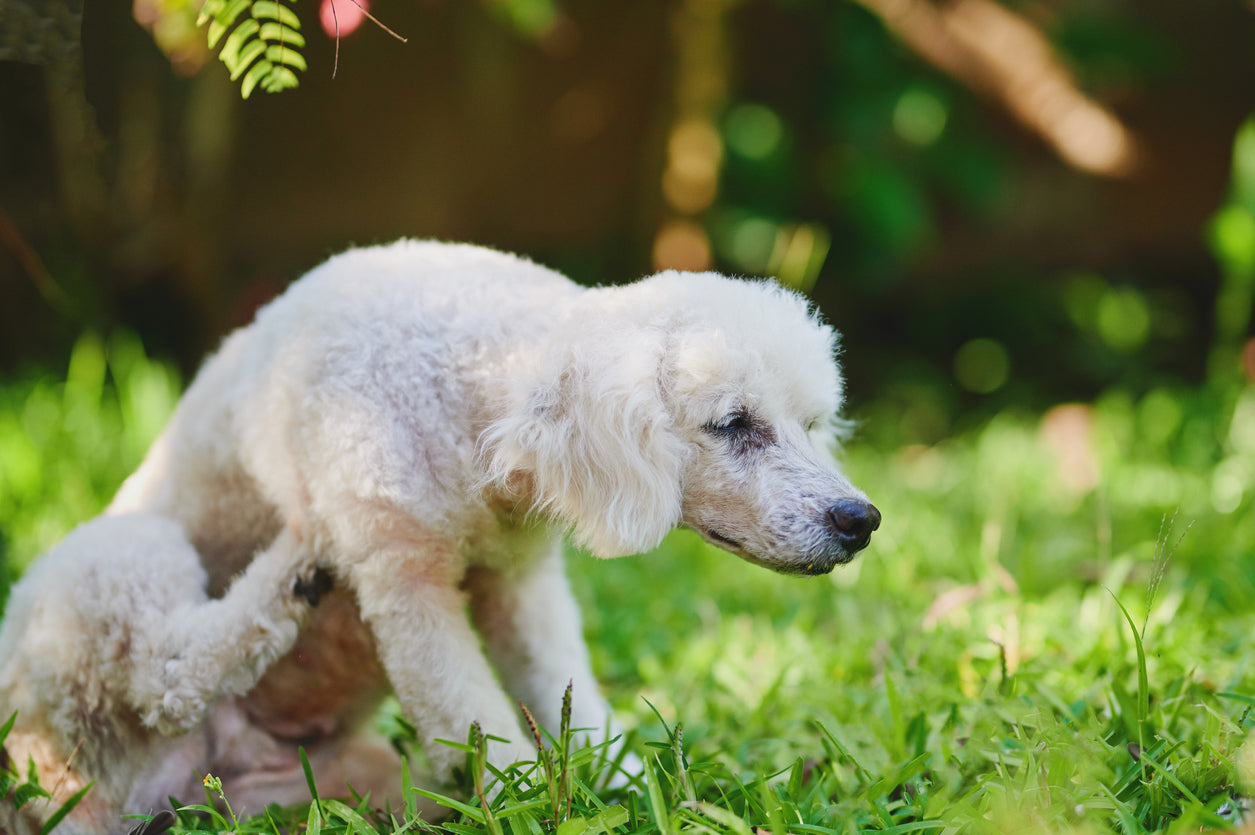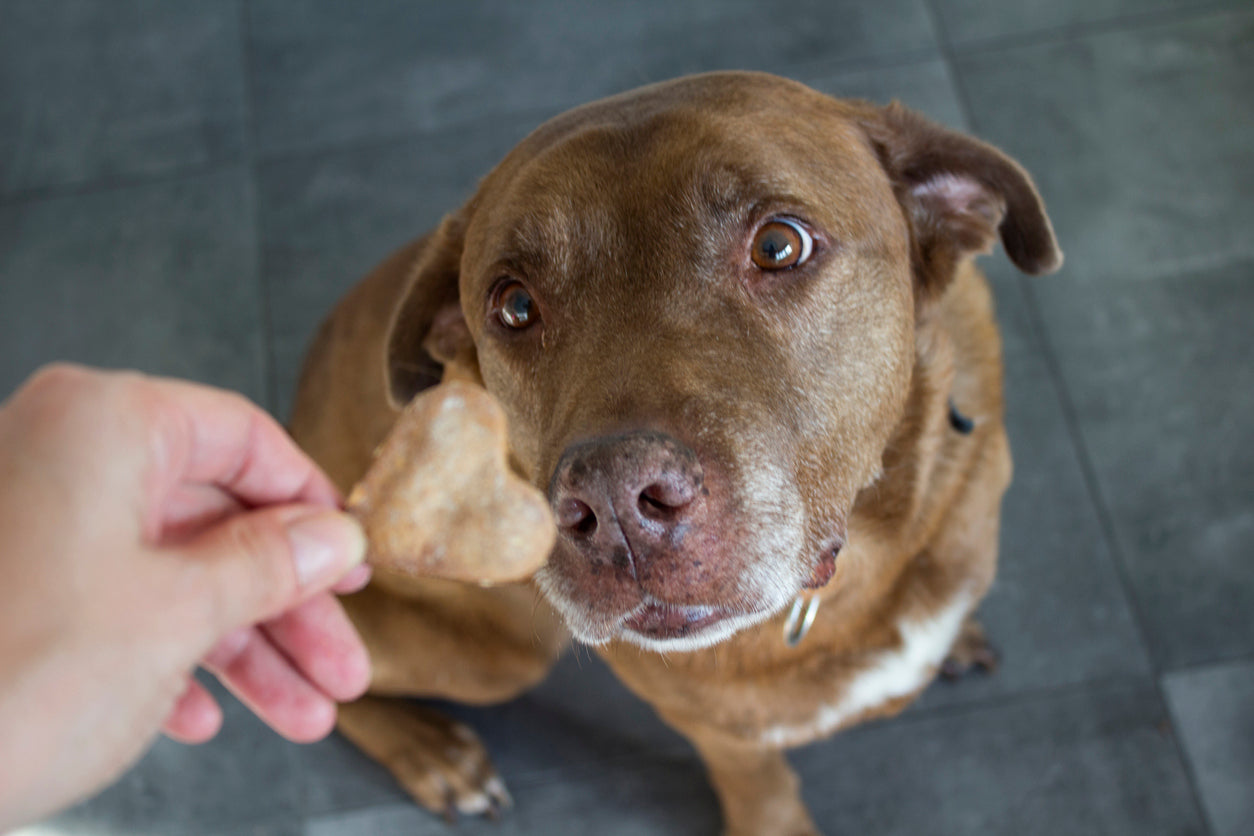Top 6 Common Causes of Ear Infections in Dogs
Ear infections can be an unpleasant nuisance for any dog, bringing pain and irritation. Knowing the top 5 causes of ear infections in dogs is key to keeping them healthy and free from infection.
Find out what those common causes are, and what preventive steps you can take.
Unfortunately, ear infections are quite common in dogs and they are more susceptible to develop an ear infection than we are. A dog’s ear canal is shaped like an “L” which is great for hearing, but also very good for trapping debris and moisture. If you own a dog with floppy ears or a dog that enjoys spending time in the water, it is very likely that you would have already had to deal with an ear infection.
There are 3 types of ear infections in dogs:
- Otitis externa (the most common type) - which affects the outside portion of the ear and which can often spread to the middle or the inner ear.
- Otitis media - infection of the middle ear canal.
- Otitis interna - infection of the inner ear canal.
Otitis externa can be very painful and uncomfortable for your pup, but if it spreads to the middle or inner ear, it can have more severe consequences including facial paralysis, deafness and balance issues.
What are the signs of an ear infection in dogs?
Common signs of an ear infection in dogs include:
- Aggressive scratching
- Rubbing their ears on walls and surfaces
- Shaking their head excessively
- Tilting the head to one side
- Unwillingness to let humans or dogs near their ears
- Redness or swelling around the ears
- A yeasty smell from their ears
- Discharge from the ear
- Loss of balance
6 Reasons Your Dog Keeps Getting Ear Infections
Some of the common causes of ear infections in dogs include:
Moist Ears
Moisture in the ear canal creates a prime growing environment for bacteria and yeast and is one of the main reasons why dogs can develop an ear infection. The overgrowth of yeast and bacteria will irritate and inflame your dog’s ear starting a vicious cycle. Moist ears are more likely to affect dogs with pendular ears as the inner ear has less chance to dry. After swimming or bathing it is recommended to thoroughly dry your dog’s ears with a towel or you may also consider using an ear cleanser with gentle, drying properties.
Poor hygiene of the ears
Poor hygiene of the ears is one of the top causes of infections in dogs. Ear cleaning should be done regularly as part of your dog’s grooming routine, to remove any debris and keep the ear canal clear of obstruction.
If left unchecked, our dog’s ears can quickly build up with wax or debris, making them more prone to infection. Make sure to purchase a vet-approved cleansing solution and use a gauze to clean your dog’s ears as cotton or paper towels can contribute to the issue by leaving fibres behind. Doing this can help keep any infection from taking root and causing more serious problems down the road.
Allergies
Allergies (food or environmental) can also be a leading cause of ear infections in dogs. Allergens such as pollen, dust, and dander can become trapped in the ear canal and cause inflammation and irritation.
When this happens, not only will your dog get an ear infection, but they will also experience an allergic reaction. Signs of an allergic reaction include pawing at the ears or head shaking, puffy eyes and general low mood. If your dog is experiencing these symptoms, consult with your veterinarian, who can help diagnose the underlying issue and recommend an appropriate treatment plan.
Bacterial and fungal infections
Dogs love to explore and get stuck in, however this can lead to bacteria in their ears flourishing in the warm, moist environment.
Bacterial and fungal infections are common causes of ear infections in dogs, and are usually treated with antibiotics and an ear wash.
Bacterial infections can occur due to moisture being trapped in the ear canal or as a result of long-term irritation from allergens. Common signs of bacterial or fungal ear infections include redness, swelling, discharge, and odour from the ears. If these signs are present, contact your veterinarian right away to begin a proper treatment plan that may include antibiotics or antifungal medications.
Mites, ticks and other parasites
Mites are tiny parasites that can burrow into the skin and reproduce excessively. Ticks can also cause irritation if they remain attached to the ear for too long.
In both cases, your vet can recommend appropriate treatments such as ointments or medicated baths to get rid of them. Prevention is key, so ask your vet about available products such as spot-on flea preventatives or tick collars to help ward off these pesky intruders.
Size and shape of the ears causing debris build up
Any dog can develop an ear infection but some breeds are more prone than others due to their anatomy. Dogs with long and hanging ears and with long hairs have a much higher risk of ear infection compared with dogs with pointy ears. Breeds like Basset Hounds, Shar Peis, Labradoodles, Beagles and Golden Retrievers top the list of dogs susceptible of getting an ear infection. The hanging ears help create a warm, moist environment for bacteria and yeast to flourish.
Cleaning your pet's ears on a regular basis helps prevent this from happening. You can use an ear cleaning solution that is specifically formulated for use with dogs or ask your vet for assistance in selecting the right product for your pet. Regularly checking for signs of wax buildup and debris is also essential in keeping your dog’s ears healthy and free from infection.

How can you prevent ear infections in dogs?
Here are some tips to reduce the likelihood of ear infections in your pup.
- Keep your dog's ears clean and dry.
- Regularly check their ears for signs of redness, swelling, and discharge.
- Completely dry the ears after swimming or bathing.
- Check for mites as well as any foreign objects that may be lodged in the ear canal.
- Avoid exposing your dog to extreme temperatures.
- Refrain from using cotton swabs when cleaning their ears.
- If their ears seem infected, head straight to the vet and treat it with antibiotics or antifungal cream.
Got a dog with an ear infection?
If you suspect an ear infection in your dog, the best thing you can do is head to the vet who will be able to assess your pet. Often, it can be tempting to leave your dog’s ears and see what happens, but if they’re experiencing the symptoms of an ear infection, the sooner you can treat it the better.















